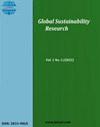A Model Walkability Index for Sustainable Urban Mobility of a Region: The Case of Soccsksargen- A Transdisciplinary Research Approach
引用次数: 0
Abstract
Although walkability studies have been pronounced and recognized as an important factor for sustainable urban development, few studies have focused on calculating a reliable walkability index that captures the multifaceted dimensions of urban mobility. Hence, this study aimed to formulate a Model Walkability Index for SoCCSKSarGen Region as the basis for urban development policies in achieving sustainable mobility. Using a convergent mixed methods design, data were collected from 399 pedestrians, five professional design organizations, and 2 public health experts. Through a transdisciplinary approach, it utilized statistical techniques such as descriptive statistics, inferential statistics, and multivariate analysis. For the qualitative findings, data were analyzed using Quirkos and MaxQDA software. Likewise, Exploratory Factor Analysis (EFA) was employed to derive the key Walkability factors for formulating the Walkability Index Model. Data revealed that all groups of experts were similar in identifying safety, comfort, and aesthetics as walkability attributes. On the contrary, only the transdisciplinary design professionals considered anthropometric measures and activities as walkability attributes aside from those previously mentioned. Likewise, the converged data provided substance in developing the Model Walkability Index (MWI) for SoCCSKSarGen Region. The resulting MWI discussed in the study represents the convergence of transdisciplinary efforts integrating safe roadway design concepts and sustainability considerations. Furthermore, the study offers a holistic assessment of walkability, enabling stakeholders to foster the creation of future walkable urban communities that are safe, healthy, and environmentally conscious.地区可持续城市交通的步行能力指数模型:索克萨根案例--跨学科研究方法
尽管步行便利性研究已被公认为城市可持续发展的重要因素,但很少有研究关注计算可靠的步行便利性指数,以捕捉城市交通的多面性。因此,本研究旨在制定 SoCCSKSarGen 地区的步行能力指数模型,作为实现可持续交通的城市发展政策的基础。 本研究采用聚合混合方法设计,从 399 名行人、5 家专业设计机构和 2 名公共卫生专家处收集数据。通过跨学科方法,研究利用了描述性统计、推断性统计和多元分析等统计技术。在定性研究结果方面,使用了 Quirkos 和 MaxQDA 软件对数据进行分析。同样,还采用了探索性因素分析法(EFA),以得出制定步行能力指数模型的关键步行能力因素。数据显示,各组专家在将安全性、舒适性和美观性确定为适宜步行属性方面的观点相似。相反,只有跨学科设计专家认为,除了前面提到的因素外,人体测量和活动也是适宜步行的因素。同样,汇集的数据也为制定 SoCCSKSarGen 地区的宜步性模型指数(MWI)提供了依据。 本研究中讨论的 MWI 是跨学科工作的结晶,融合了安全道路设计理念和可持续发展因素。此外,该研究还提供了对步行能力的整体评估,使利益相关者能够促进创建安全、健康和环保的未来步行城市社区。
本文章由计算机程序翻译,如有差异,请以英文原文为准。
求助全文
约1分钟内获得全文
求助全文
来源期刊

Global Sustainability Research
sustainability and environmental focus-
自引率
0.00%
发文量
0
期刊介绍:
Global Sustainability Research (ISSN: 2833-986X) is an Open Access journal dedicated to supporting the rapidly expanding area of global sustainability research. Global Sustainability Research Journal publishes original research and reviews which seeks to address and discuss ways to deliver sustainable development. Manuscripts submitted to Global Sustainability Research must address issues linked with the achievements of sustainability and sustainable development goals.
 求助内容:
求助内容: 应助结果提醒方式:
应助结果提醒方式:


